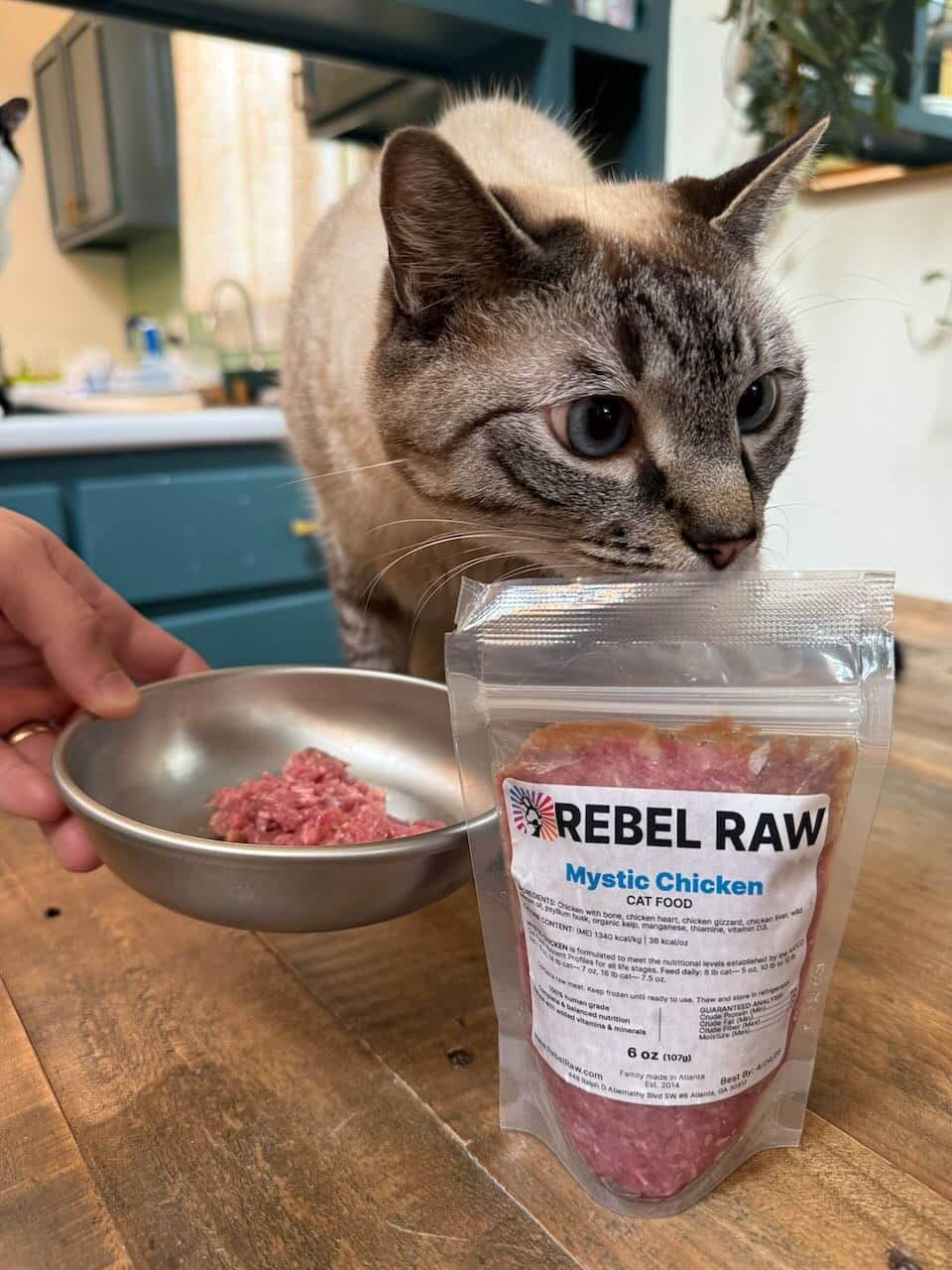
Transitioning your cat to a raw diet
Switching your cat to a raw food diet brings an array of health benefits, closely aligning with a feline's natural dietary needs for improved nutrient absorption and overall vitality. While some cats, particularly kittens, may adapt quickly, others might need a longer period and your patient guidance. To optimize these health advantages while ensuring a smooth and digestive-friendly transition, follow the guidelines below:
Temperature matters
Cats generally prefer their food at room temperature. So, if you're pulling raw food from the fridge, make sure to let it sit out for a bit to reach room temperature before serving it to your feline friend.
Gradual introduction
To minimize digestive discomfort, consider starting by replacing just 10% of your cat's current diet with raw food. If your cat's stools remain firm and well-formed, you can gradually increase the proportion of raw food.
Understanding feline finickiness
Cats may seem finicky, but this behavior is a natural instinct to focus on a specific type of food, aiding kittens in learning to identify what is edible. Cats that have been on a single type of diet for a long time might not readily identify raw meat as food. Commercial foods often contain flavor enhancers, making the transition to a raw diet challenging for some cats.
Recommended protein sequence
We've found cats have the most success transitioning when feeding our proteins in this order — Mystic Chicken, Chicken + Salmon Vibes, Magic Rabbit, Wonder Turkey.
Changes in stool
When switching to a raw diet, it's normal to observe changes in your cat's stool. Initially, you may notice looser, differently textured, or variably colored stools, possibly accompanied by mucus. This is typically a temporary adjustment period as your cat's digestive system acclimates to the raw diet. A brief period without bowel movements is also not uncommon. Once adapted, your cat's stool should be small, firm, and virtually odorless.
Tips for transition based on current diet:
If your cat eats kibble:
If your cat is hesitant, transition to a wet food diet first. Gradually introduce raw food by mixing it with the kibble, increasing the raw-to-kibble ratio over time. Alternatively, you can place small amounts of raw food next to the kibble to familiarize your cat with its new mealtime option.
If your cat eats wet food:
If your cat refuses to eat when raw food is mixed in, place small portions of raw food next to their current wet food. This helps your cat associate the raw option with mealtime, initially encouraging sniffing and eventual tasting.
By following these guidelines and monitoring your cat's response, you'll be better prepared to successfully transition your feline friend to a healthier, raw food diet.